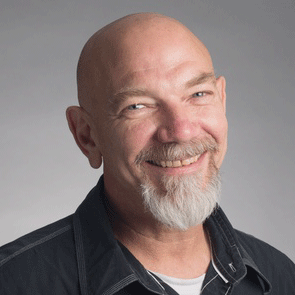Bob Young
Knight Science Journalism Fellow, ’14-15

Bob Young is a staff reporter at The Seattle Times, where he covers marijuana as Washington state creates history by legalizing production and sale of the drug. He has also reported on politics and urban affairs in his 12 years at the paper and been a staff writer for the Times’ Sunday magazine.
What is the one story you would like to be covering if you weren’t a KSJ Fellow this year?
I covered marijuana legalization for almost two years before coming to MIT, and that's the story I would most like to be dogging. It's been the most wake-up-excited beat I've ever had, with the most who-would've-imagined questions and the most front-page bylines. There are elements of science, politics, business, public health, medicine, and culture. And there's a need for reporters to push back on a daily basis, as author Bruce Barcott has said, against the “misinformation and magical thinking” rampant on this beat.
What has been the focus of your research during your Fellowship? Why is this issue important to you and for the public?
Legal marijuana is poised to spread across the US. Then what?
The unintended consequences and unforeseen problems may be grave. As millions of Americans reckon with this, I'd like to think science will guide us in understanding the real risks. And it's crucial that journalists understand how to report the science, accurately and with context.
Partisans on both sides of this emotionally charged debate have demonstrated they will pounce on any science — and even distort it — to make their case. I aim to be a journalist, in the thick of the fray, who can tell what's real and what's myth, what's correlation and what's causation, especially in the realm of marijuana's impact on the developing brains of teens.
From neuroscience classes to medical-evidence workshops — and much more — the MIT fellowship has propelled me toward my goal of becoming the best-informed reporter on the beat.
“From neuroscience classes to medical-evidence workshops — and much more — the MIT fellowship has propelled me toward my goal of becoming the best-informed reporter on the beat.
How does the proliferation of social platforms — Twitter, Tumblr, Facebook — and digital storytelling tools — embedded video, slideshows, podcasts — change the way you conceive of your work as a journalist?
The proliferation of digital tools only changes the ways we share and promote our journalism. The most important need, the most vital service we can provide, remains the same: to go into labs, libraries, and places of innovation, and bring back compelling stories, with appropriate context, to illuminate and demystify important issues. As Cory Haik, executive producer for digital news at The Washington Post, put it: "The only thing we should be chasing in 2015 is news […] Purely chasing pageviews is a fool’s errand. In the short term, it gets you a bigger comScore number. But those calories are empty.”
Suggested Links
Knight Science Journalism website
MIT Science Writing Program website
Read a selection of Bob Young's articles at The Seattle Times
Story prepared by MIT SHASS Communications
Editorial team: Emily Hiestand and Daniel Pritchard